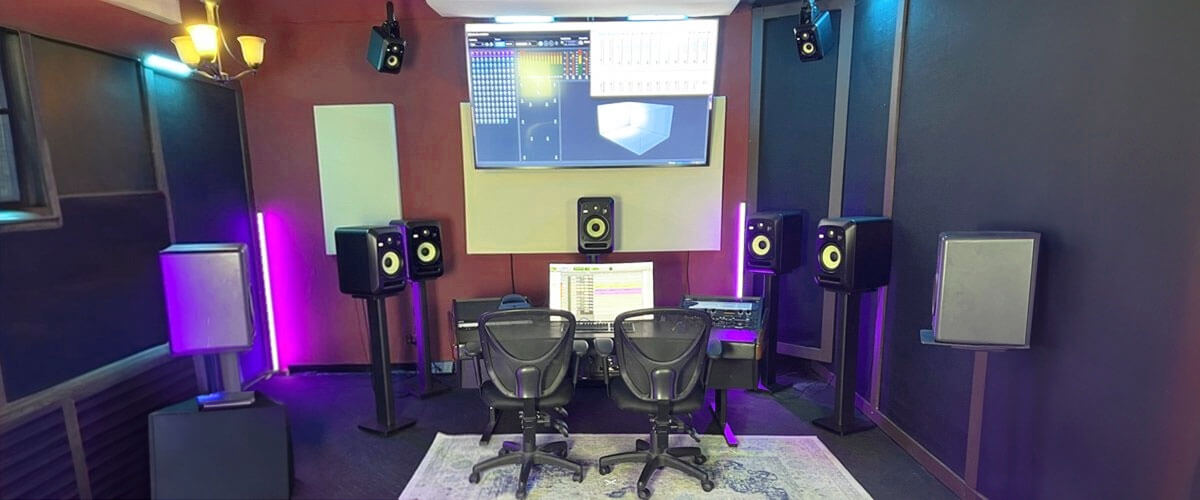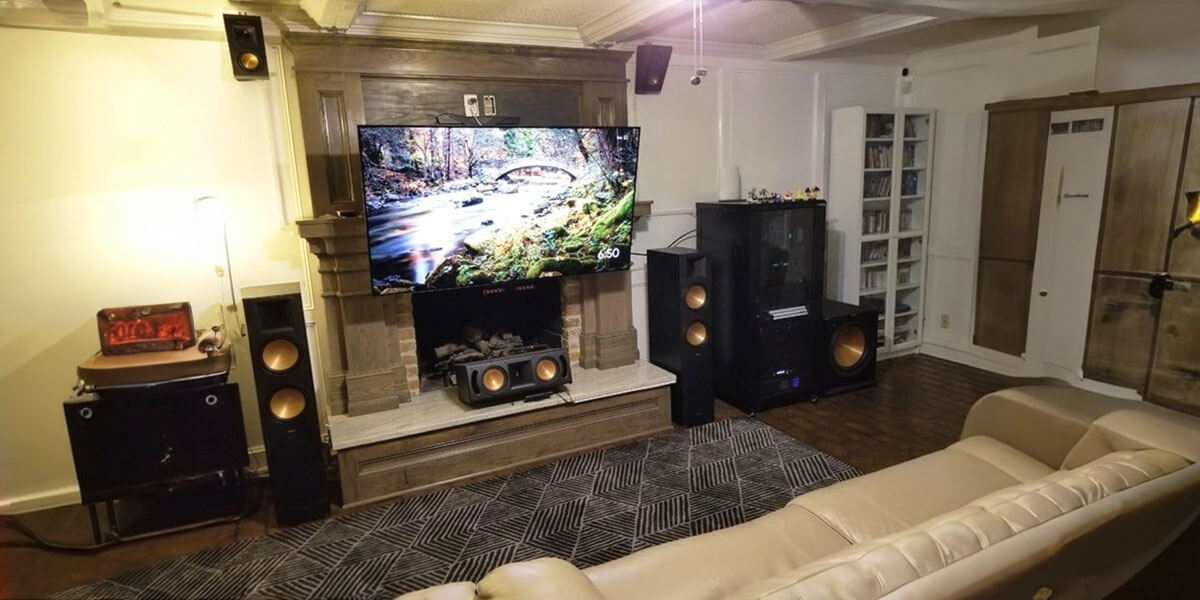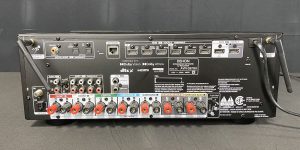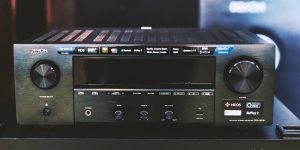Today no one can surprise anyone with the realism of surround sound when watching movies in the theater. But its popularity in-home use is also growing. However, many people only know about the existence of such technology but do not quite understand its subtleties and features. Surround sound explained cannot do without describing the history of its appearance because the evolution of audio technologies is a fascinating journey marked by innovation and creativity. That’s why I will dedicate my article to the emergence of the three most popular surround sound formats today: Dolby Atmos, DTS:X, and Auro-3D, which forever changed the lives of true connoisseurs. But let’s start from the very beginning.
Immersion unleashed: the role of surround sound

This technology works on the principle of surrounding the viewer with sound from every possible angle, creating the most realistic picture possible. The digital signal is transmitted from the source to the AV receiver, which decodes it and sends it to the speaker, where a particular soundtrack will sound the best. With them, the rustle of the wind in the leaves, the movement of a train, the sound of rain, or a passing helicopter sound as if the events were happening not on the screen but around you. You literally feel yourself in the center of events; you can feel what is happening on the screen.
Therefore, the role of surround sound technology is difficult to overestimate because any viewer can appreciate the unique sensations, whether immersed in this atmosphere for the first time or has long been familiar with the subtleties of sound effects.
The journey of surround sound evolution

Actually, the concept of surround sound format appeared not so long ago, only at the end of the 20th century. After Dolby Company introduced Dolby Surround 4-channel sound to the world in 1982, the events developed quite interestingly. Already in 1983, AC-3 with 5 channels appeared – the prototype of Dolby Digital (which burst into our lives in 1992).
So, after the appearance of 5.1-channel Dolby Digital (with the addition of separate bass frequencies), it didn’t take long to see its main competitor – DTS (1993), which emphasizes that it doesn’t compress the sound like Dolby and has less loss. These formats worked with a stereo system, with 5 speakers playing matrix channels.
By 2004, digital surround sound reached a new level, offering to the world 7.1 channel sound in Dolby Digital and DTS HD Master Audio formats. These formats are now considered mandatory, and no AVR does not support them (HDMI 1.3 is required). Until now, these two formats have gone hand in hand, using identical quality and connection types.
Modern surround sound formats, which began with the introduction of Dolby Atmos technology to home theaters in 2014, decode discrete sounds and distribute soundtracks to different channels, which is why you can hear dialog, music, and tone so clearly, feeling the sound around you. But more about that in a bit.
Battle of the Titans: Dolby Atmos vs. DTS:X vs. Auro-3D

Dolby Atmos, DTS:X, and Auro-3D are the most popular and sought-after surround sound formats. The first two can be used starting with a 7.1 configuration and adding additional speakers to the standard 5.1. But the true beauty is revealed when there are 9 or more channels (minimum for Auro-3D). Each format has its unique features and advantages, so let’s get to know them better so we can give them our hearts and ears forever.
Dolby Atmos: a sonic revolution
This surround sound format was born in 2012 and revolutionized the industry. And as I said earlier, in 2014, it already began to penetrate our homes, and today almost all, even inexpensive receivers, support it.
The essence of this technology is that it directs object-based audio where it should come from in reality. That’s why Dolby Atmos is called an object-based format. Dolby Atmos also uses height channels (in-ceiling speakers are most suitable, but you can also just hang them from the ceiling on the walls), so you hear sound from objects that are supposed to be above you (the most common example is a helicopter “flying” over the viewer). Thus listening is inside the soundstage and is maximally immersed in the movie. The minimum requirement for an immersive format – is 7 speakers (plus sub) and a movie with a soundtrack encoded in Dolby Atmos. And, of course, your receiver must support this format.
DTS:X: a sonic Odyssey
DTS:X is the main and only competitor for Dolby Atmos today. It appeared only a year later and, apparently, has considered its predecessor’s shortcomings. First, unlike Dolby Atmos, this surround sound format does not compress audio and therefore works without losses (however, you need HDMI not lower than version 1.4). Secondly, to use it, drilling the ceiling is absolutely unnecessary. In addition, you can make deeper customization to various parameters, resulting in a system that adapts to your conditions and becomes more versatile.
DTS:X’s object-oriented sound is most appreciated by those who can capture the smallest nuances, precision, and smoothness. The sound literally follows you.
Auro-3D: elevating the soundstage
Auro-3D technology appeared much earlier than Dolby Atmos and DTS:X. It was introduced in 2006 but has not been widely used in the home until recently. Only a few AV receivers can boast support for this immersive format, probably because it requires a minimum of 9.1 (5.1.4) channels, which quite expensive devices can do. And you will have to choose an expensive speaker system. Although, in my experience, all the variety and colorfulness of layers Auro-3D reveals with 11 channels.
The uniqueness of the surround sound format is that it is not object-oriented but adds upper auditory layers, creating a streamlined shell around the listener. Auro-3D is deeper, but most importantly, it is completely natural and authentic. It is ideal for concert listening, building a stunning acoustic atmosphere.
Today, technology is still not too popular but is gaining momentum. Plus, as you may have guessed, it’s still a privilege for those who can spend more.
Brief comparison: Dolby Atmos vs. DTS:X vs. Auro-3D
To better understand the specifics and benefits of each format let s take a look at the table
| Format | Advantages | Disadvantages |
|---|---|---|
| Dolby Atmos | Unparalleled height dimension; Widely adopted and supported; Thriving ecosystem |
Equipment cost; Complexity of setup |
| DTS:X | Customizable object-based audio; Precise sound placement; Compatibility |
Limited content; Equipment cost |
| Auro-3D | Unique height and depth layers; Natural and immersive sound; Music enhancement |
Limited adoption; Equipment cost |
Picking the perfect format: your personalized choice
No one has the same preferences, and your choice will be as personalized as possible. Each surround sound format presented in this article is popular for its advantages and has earned viewers’ trust. I believe that in order to make an informed choice, you should listen to each one, learn more about the specifics, and pick the one that will make your evenings unique and unforgettable. However, you may know that there are AV receivers that support all three formats and many others (including older formats). And they are valuable in transmitting any content from any medium in its original form. I hope I’ve been useful to you, and I wish you good luck in the world of surround sound.









